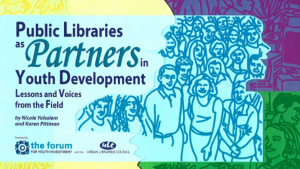
For two decades now, I have participated in conversations about how to take community-based youth programs to scale, demonstrate effectiveness, define outcomes, explain key inputs. Progress has been made, but it gives one pause to reflect on the number of hours that have been devoted to the task. Let me suggest a reason for our relative lack of success:
Social science evaluation models don’t work when individual success is more heavily influenced by environment than by individual actions. We need to stop looking for predictors and correlates and control groups. We need basic physics. Consider what we know about the factors that affect the launching and landing of airborne objects — rockets, airplanes, missiles.
Aim. The odds of landing on mark are increased greatly if the launchers set a correct course. This demands knowing the target and having and adequate understanding of the requirements and conditions.
Speed. Crafts launched at insufficient speeds are less likely to reach the target and will probably drop off course.
Monitoring. Aim and speed are critical for good launch, but constant monitoring and rapid adjustments are critical. Last minute corrections are much harder to make once the rocket has drifted significantly off course.
Atmospheric Conditions. Turbulence, air pockets, wind, changes in gravitational pull — all conditions that can pull the best-aimed rocket off course quickly.
Compensatory Devices. Most environmental conditions cannot be controlled. Scientists have to anticipate potentially dangerous conditions and have countervailing equipment built into the rocket (e.g., shields, booster rockets).
Fail Safe Devices. Recognizing that things may go wrong, scientists must ensure that badly damaged or off-course rockets do not endanger other rockets in route or cause damage upon landing.
Social science research is based on Mendel’s studies of probability of genetic variations in peas. It seems to me that children are more like rockets than peas. They are launched, by their parents, into an atmosphere that they must traverse for 18 to 24 years before they “land” in adulthood. The success of that journey depends on acknowledging the laws of physics.
Why the concern about teenage pregnancy? Because we worry that parents who have yet to reach adulthood don’t know enough about the “target” or the “conditions” to aim well, setting a reasonable course. Similarly, our great interest in “earlyinvestments” — prenatal care, parent education, early childhood education, family support centers — stems from our recognition that a solid early start is vital for establishing sufficient speed.
There are efforts underway to increase the monitoring of “pre-launch conditions” that exist in the early years. Where we fall short, I believe, is in the school years. Monitoring systems become fragmented, sluggish and too crude in their settings to track the irregularities that later become problems.
Crude too, is our ability to track environmental conditions. We tend to focus on the macro — poverty, unemployment, drug infestation — conditions that have a major impact on neighborhoods. But we ignore, both in documentation and in support, the conditions that account for the resiliency still found in many families and communities that also have these macro burdens. We fail to understand and support the role of adult guidance, standards and sanctions; networks of neighbors; the insulating effect of supportive, focused peer groups; and the importance of real opportunities to contribute to family and community stability — factors that so often ensure a successful take-off, flight and landing, even in hazardous conditions.
Our insistence that youth problems can be “corrected” via individual treatment and problem-solving means that we have designed a full range of compensatory devices that serve more to annoy than to adjust. Young people who are off-track know it. And rather than adjust their environments (which we can do) or offer them permanently attached shields or boosters, we pelt them with corrective missiles packaged as six-week or six-month interventions that try to shove them back on course. If the problem is temporary turbulence, this type of correction can suffice. But if we are dealing with a young person who is winging through a storm, these interventions are not only insufficient but irritating in their failure to address underlying causes.
The public is annoyed with the pelting approach as well. Having decided that prevention and early intervention are good ideas that are impossible to implement, they are turning their attention to calling for fail-safe devices. Serious, chronic, and violent youth do need to be identified and disarmed if they cannot be forced back on course. But we must generate state, local, and national commitments that guarantee early and sustained supports to address youth needs, support families with jobs and services, and stabilize and strengthen neighborhoods.
We welcome your contributions to the topic. Please reach out to talkwithus@kpcatalysts.com if you’d like to join to the discussion.
Article was originally published in

Pittman, K. (1995, July/August). “Maybe it is Rocket Science.” Washington, DC: The Forum for Youth Investment. A version of this article appears in Youth Today. July 1, 1995



No comment yet, add your voice below!